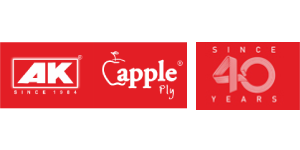If you want to renovate your home but aren’t sure what material to use, you should consider composite woods like plywood, MDF, and particle board. To know which one you should use, you need to know the difference between plywood vs MDF vs particle board to help you make a more informed decision.
This article will explain what composite wood is, the three different types of composite wood, and how they’ll benefit your next project.
What Is Composite Wood?
Composite wood, which is made from a combination of wood fibers, wood flour, plastic, and binding agents, is a great substitute for traditional wood. Users like composite wood because it’s not only more polished but also stronger since it promises higher endurance at lower maintenance costs.
Also Read :Plywood or Solid Wood: Choosing the Best Plywood for Home Furniture
Plywood Vs MDF Vs Particle Board
Before we make a hasty decision to purchase a piece of furniture, let’s first study plywood vs MDF vs particle board and learn about their respective meanings, benefits, and downsides.
What Is Plywood?
Plywood is a thin sheet made by gluing together layers of wood. To make plywood, thin wood layers, or “core”, (approximately 1.5mm to 2.5mm thick), are stacked one on top of the other in opposite directions.
To make the plywood face, a thin layer of wood veneer is applied to the front and back surfaces of this.
Pros and Cons of Plywood
| Pros of Plywood | Cons of Plywood |
| Compared to wood panelling, plywood is relatively inexpensive. | Plywood edges may require additional finishing as they are not as appealing as solid wood edges. |
| Due to its durability, plywood is an excellent material to use for flooring and wall sheathing in building projects. | If not properly cared for and sealed, it may be vulnerable to water and humidity damage. |
| Compared to solid wood, it’s easier to deal with and can even be cut, drilled, and nailed. | Some plywood varieties can release the carcinogenic chemical formaldehyde (which has the potential to cause cancer). |
| The thin layers of veneered wood, which have a constant grain pattern, reduce the risk of warping. | If aesthetics are a main priority, it might not be suitable for some furniture styles or cabinetry. |
What Is MDF?
MDF, or medium-density fiberboard, is a piece of engineered wood formed using wood fibers. These fibers are cemented together with pressure and heat, creating a smooth surface.
Because of its flat texture, uniform density, and structural stability, MDF is frequently used for flooring, furniture, and cabinets. It is simple to cut, shape, and paint, making it easy on the wallet.
Pros and Cons of MDF
| Pros of MDF | Cons of MDF |
| MDF is preferred for furniture and cabinetry since it’s less expensive than solid wood. It also costs less when compared to plywood. | MDF is a heavy and dense material, making it difficult to transport. It’s even difficult to work with this material single-handedly. |
| Because of its sturdiness and use of long-lasting ingredients, it can support a large amount of weight. In addition, it’s more durable and dense than particle board. | MDF is quickly damaged and sags if handled aggressively or carelessly. |
| It’s ideal for customization and a wide range of tasks since it’s easy to cut, drill, and shape. | Because of its lack of moisture resistance, it can swell when exposed to water. This makes it a poor choice for outdoor or high-moisture applications. |
| Because of its flat surface, which can be readily painted or laminated, it’s an excellent choice for ornamental projects. | |
| It’s less likely to warp or split due to its uniform density. | |
| It’s resistant to high fluctuating temperatures and humidity, so it doesn’t warp, deform or crack. |
What Is Particle Board?
Particle board, often known as chipboard, is a wood-based manufactured product made from wood chips, sawdust, and other wood particles glued together under high heat and pressure.
Particle board is a common material for flooring, cabinets, and furniture due to its inexpensive cost and structural resilience. It’s also used in construction for roof decking and subflooring.
Pros and Cons of Particle Board
| Pros of Particle Board | Cons of Particle Board |
| Compared to other composite wood products, particle boards are affordable and economical. | Due to its lack of sturdiness, it is not able to support greater loads. |
| Particleboard often has a smooth surface, which makes the finished items appear neat and attractive, increasing their decorative value. | When cut or sanded, particle boards can release dangerous chemicals; thus they should only be utilized in well-ventilated environments. These boards may also be harmful due to the use of urea-formaldehyde resin in the production process. |
| These boards are relatively easy to lift, move, and handle due to their lightweight weight. | Particle board is a bad choice for outdoor or high-moisture usage because it’s not moisture-resistant and can swell and change colour when exposed to water. |
| It’s made with leftover wood, so it’s environmentally friendly. | Since it has fairly low durability, the longevity of the furniture manufactured from it can be impacted. |
A Comparison of Plywood vs MDF vs Particle Board
| Criteria | Plywood | MDF | Particle Board |
| Environmentally Safe | ✔✔✔? | ✔✔✔? | ✔✔✔? |
| Heat Resistant | ✔✔✔? | ✔✔? | ✔✔? |
| Weatherproof | ✔✔✔? | ✔✔? | ✔✔? |
| Cleaning Efficacy | ✔✔? | ✔✔? | ✔✔✔? |
| Longevity | ✔✔? | ✔✔✔? | ✔✔✔? |
| Ability To Hold Screws and Nails | ✔✔✔? | ✔✔? | ✔✔? |
| Affordability | ✔✔✔? | ✔✔? | ✔? |
Final Decision: MDF vs Plywood vs Particle Board
The strongest and most durable of the three, plywood is ideal for a wide range of applications, whereas MDF and particle board are less durable but more affordable options.
The debate over MDF vs plywood vs particle board comes down to particle board being a practical substitute for plywood for furniture and cabinetry, MDF being an excellent choice for decorative projects, and plywood being appropriate for heavy-duty applications. Knowing the differences between these materials will help you select the best one for your project.
If you’re looking to buy plywood, MDF, or particle boards for your upcoming home makeover, visit AK Plywood’s website to browse a variety of options. You can also contact us directly, and our experts will be happy to help you make the best decision for your requirements.




